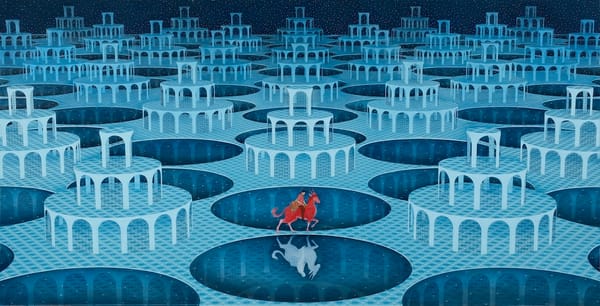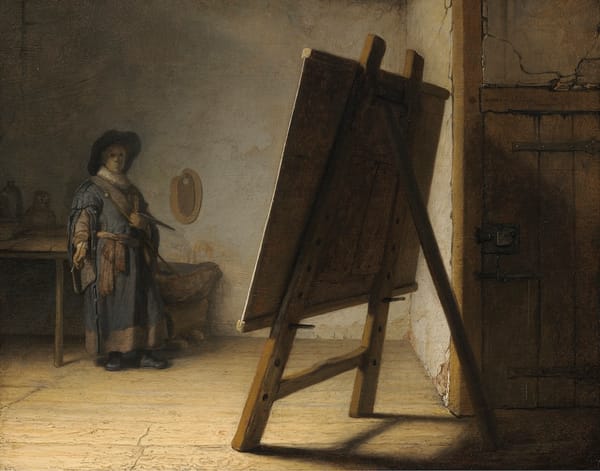Smita Prabhakar on Legacy, Belonging, and the Future of South Asian Art
Smita Prabhakar reflects on her journey with the Ishara Art Foundation, championing South Asian contemporary art and cultural philanthropy in the UAE, bridging communities through art and dialogue.

For over four decades, Smita Prabhakar has lived and worked in the UAE, where she has built a life that straddles entrepreneurship and cultural philanthropy. As Founder and Chairperson of the Ishara Art Foundation in Dubai, she has been instrumental in championing contemporary South Asian art, creating space for critical dialogue, education, and global engagement. Ishara, founded in 2019, reflects her long-standing vision: to build cultural bridges and honour the diversity of voices across South Asia and its diaspora.
Smita’s commitment extends well beyond her foundation. She serves on the International Acquisitions Committee at Tate Modern in London, the Middle Eastern Circle of the Guggenheim Museum in New York, and the Peggy Guggenheim Collection in Venice. Her private initiative, The Prabhakar Collection, continues to grow as an archive of significant artistic practices from the region. Over the years, she has supported landmark exhibitions and initiatives including the V.S. Gaitonde retrospective at the Guggenheim, Shilpa Gupta’s participatory work at the Kochi-Muziris Biennale, and multiple editions of the Colomboscope Festival in Sri Lanka.
In this conversation, Smita reflects on the founding philosophy behind Ishara, the importance of building institutional infrastructure from scratch, and the collective effort required to support South Asian contemporary art on a global stage. Speaking with clarity, generosity, and humility, she offers deep insights into cultural philanthropy, the evolving role of collectors, and how meaningful change often begins—brick by brick.

Nikhil Sardana: You’ve been based in the UAE for over four decades. What first drew you to contemporary South Asian art, and how has your perspective evolved over the years?
Smita Prabhakar: I’ve evolved—just as contemporary art has. To your first question: why does it appeal to me? Because it mirrors the life I lead. Take our recent exhibition at Ishara by Shilpa Gupta—her work often references the Bangladesh-India border, which resonates deeply with me. My father worked for the railways, and we were posted in Dibrugarh during the 1971 war. I remember hushed conversations at home, the strong military presence in Assam—those memories are part of me.
That’s what contemporary art does—it reflects lived experience. I recall seeing Ayesha’s Jamdani saree work in Italy. As someone who wears sarees daily and values handloom traditions, it struck a chord.
When I began collecting, I focused on Indian contemporary art. But with Ishara, I’ve come to see how interconnected we are. The stories from Bangladesh, Nepal, Sri Lanka and Pakistan all matter to me now. My perspective has grown—along with my collection. And that’s something I value deeply.
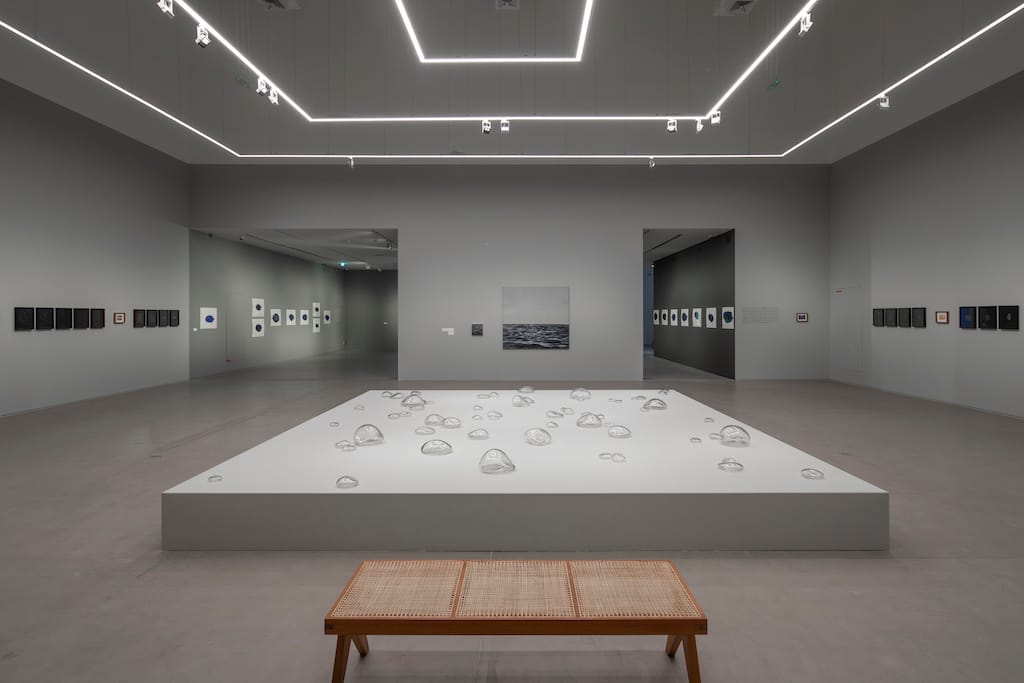
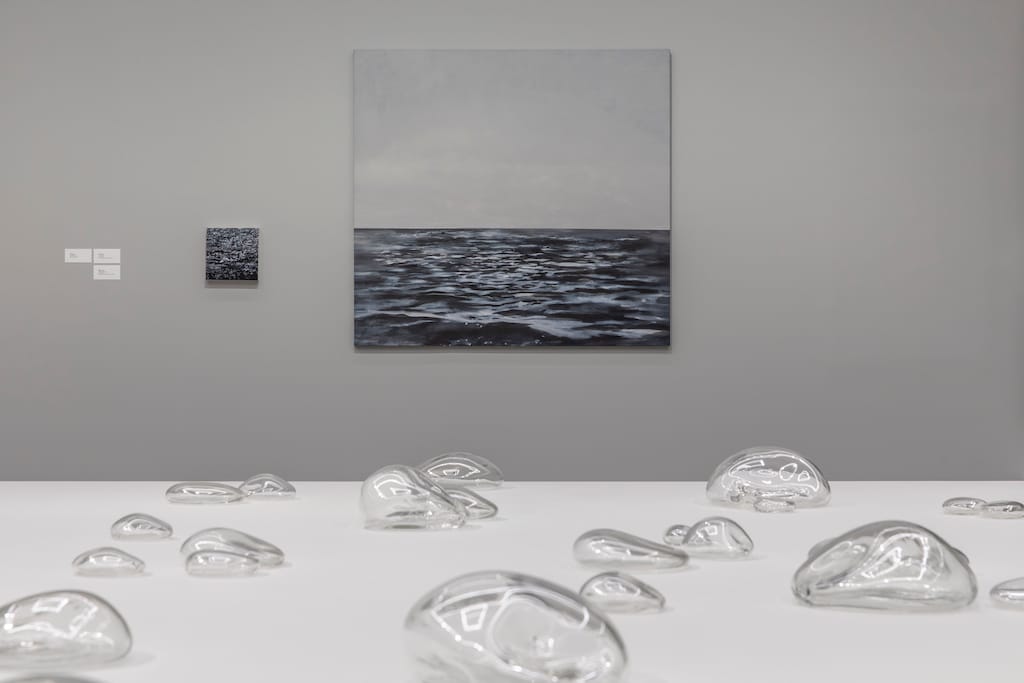
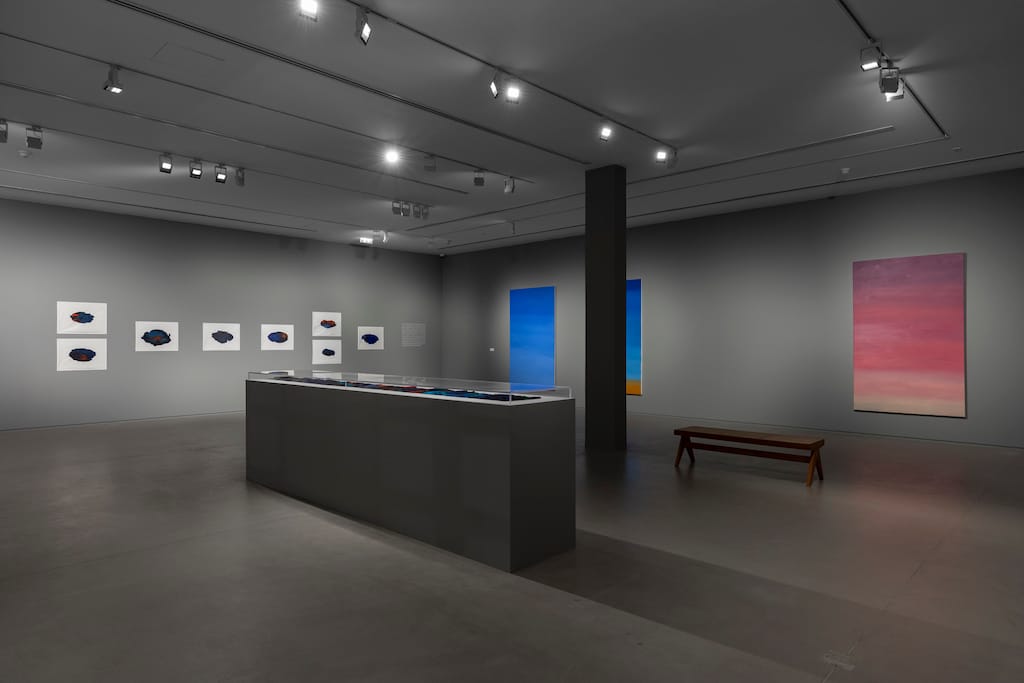
Installation views of Ayesha Sultana: Fragility and Resilience at Ishara Art Foundation, 2024. Images courtesy of Ishara Art Foundation and the artist. Photography by Ismail Noor / Seeing Things.
NS: Could you share the genesis of the Ishara Art Foundation? What vision did you have when establishing it, and how has that vision shaped its programming and curatorial ethos?
SP: Why did I establish the Ishara Art Foundation? For two main reasons. First, Dubai has been my home for 45 years. It’s where my family has grown and thrived, and giving back to this city felt essential. Had I lived in Delhi under similar circumstances, I might have done the same there—but this is home.
Second, I wanted to do something I feel deeply passionate about. While I care about causes like education and poverty alleviation, art speaks to me on a personal, intellectual, and aesthetic level. I wanted to be actively involved—not just a distant supporter of a cause.
Focusing on South Asian contemporary art made sense because of the large diaspora in the GCC. Despite our numbers, our cultural heritage in the arts wasn’t being highlighted—not due to a lack of value, but due to lack of visibility. Places like Florence and Rome honour their artists; why shouldn’t we?
When visitors saw Shilpa Gupta’s solo exhibition—her first in the region—they were moved. It was also Gupta’s first solo in the GCC. We’ve had major presentations of artists like Amar Kanwar and Zarina Hashmi. These ‘firsts’ are meaningful. They show we’re helping shift the cultural discourse—and that feels deeply rewarding.
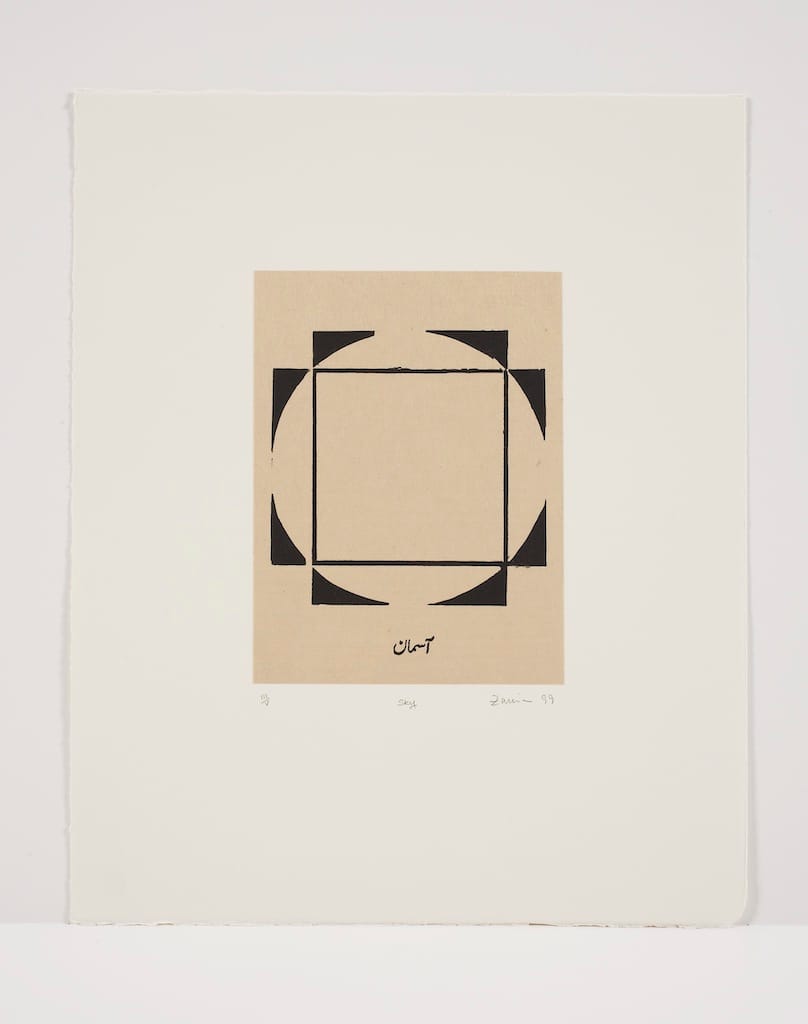

Left: Zarina, Sky from the portfolio Home is a Foreign Place (1999). Portfolio of 36 woodcuts with Urdu text printed in black on Kozo paper and mounted on Somerset paper. © Zarina. Image courtesy of the artist and Luhring Augustine, New York; The Ishara Art Foundation and the Prabhakar Collection, Dubai. Right: Ishara Art Foundation logo.
NS: "Ishara" is such a distinctive and evocative name—it means "a gesture" or "signal" in many languages. What significance does this name and the logo, inspired by Zarina’s Home is a Foreign Place, hold for you personally?
SP: Shall I tell you the truth? The name came from a Rahat Fateh Ali Khan love song. I can’t recall which one, but I was in the car, thinking about names for the foundation, and the word Ishara just struck me.
I was clear—I didn’t want my name in the title. I also didn’t want an acronym or something that would be shortened. Ishara felt perfect: it means a gesture, a direction, a signal—something suggestive, open to interpretation. It’s my love letter to art.
The word exists in Arabic, Urdu, Hindi, Swahili, and Farsi—spanning cultures and languages, just like the region we work in. It invites curiosity, and that was important to me.
The logo, based on Zarina’s Home is a Foreign Place, uses the ideogram for ‘sky’—آسمان. Her work has always touched me, and the symbol is poetic, abstract, and resonant. That’s what I wanted Ishara to stand for.
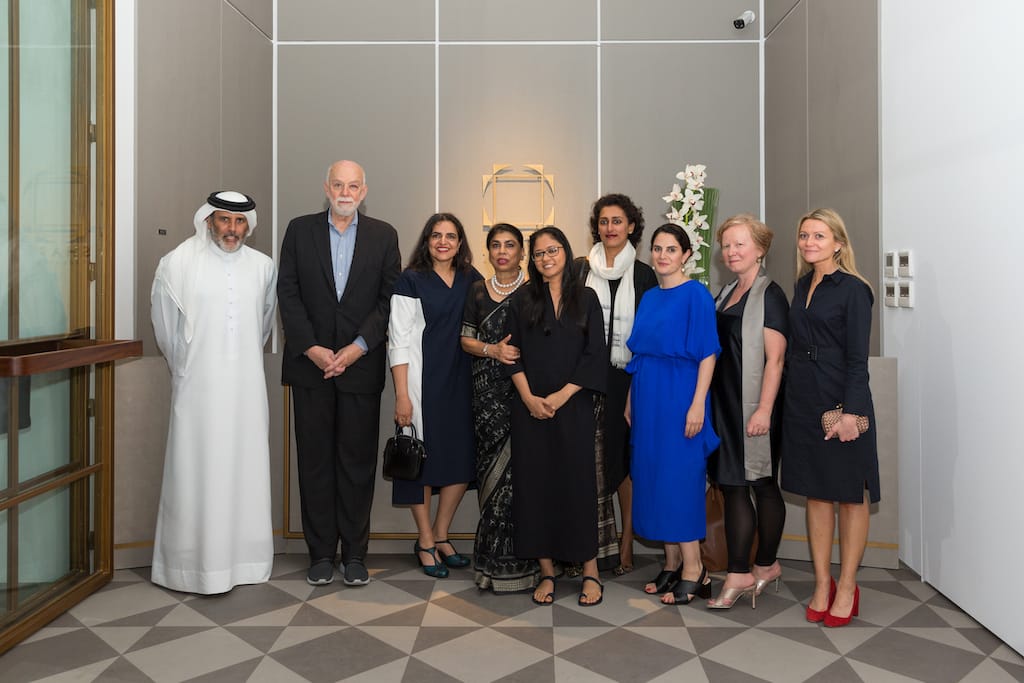
NS: You’ve supported significant international initiatives — from the Gaitonde retrospective to the Kochi Biennale and artists like Shilpa Gupta. How do you decide which artists or projects to support?
SP: For me, it often starts with intuition and reflection. When Richard Armstrong—then Director of the Guggenheim—wrote to me about the Gaitonde retrospective, Ishara wasn’t yet in my mind. But something clicked. With Sandhini Poddar curating, I felt a responsibility.
Gaitonde hadn’t received international recognition, and supporting that show felt like placing the first brick in a larger journey. When it travelled to Venice, I thought—when had Venice ever seen a solo Gaitonde show? That was a proud moment.
It wasn’t a calculated decision. It was a feeling. And over time, one step led to another, until I realised—I had built something. Every effort adds a brick to the home we’re creating for South Asian contemporary art.
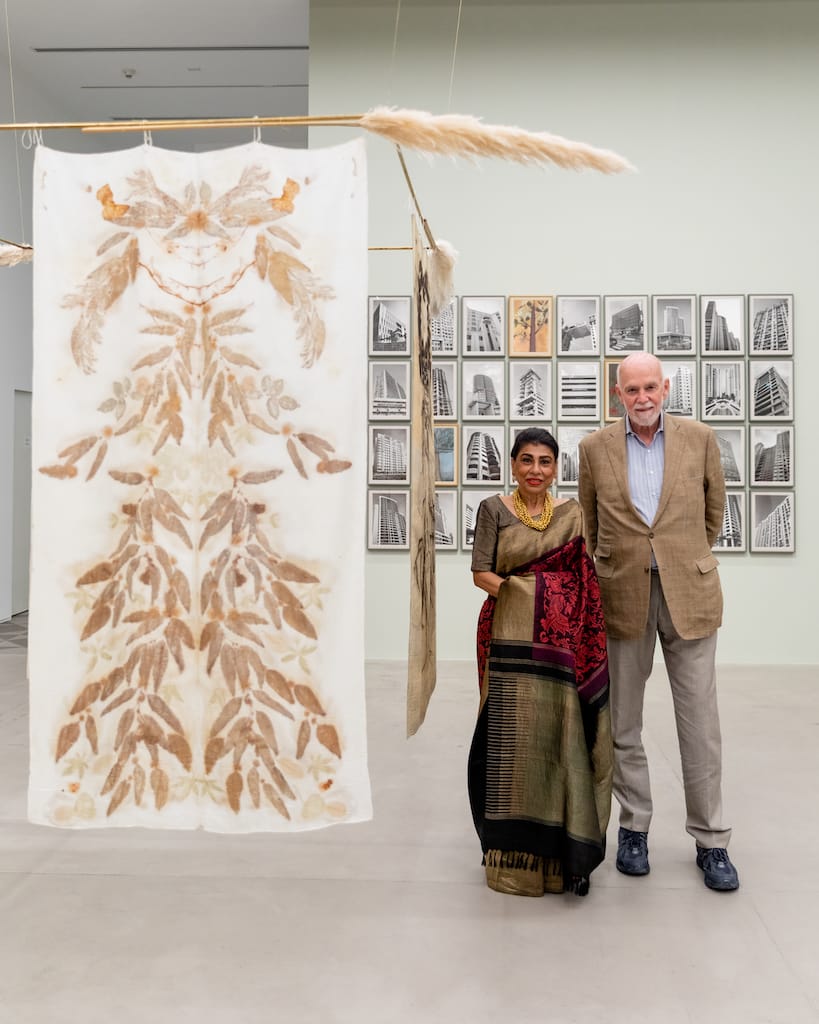
NS: You serve on the boards and acquisition committees of institutions like the Guggenheim, Tate Modern and the Peggy Guggenheim Collection. How is South Asian art being received globally?
SP: South Asian art is, quite simply, on the cusp. At a social gathering, I once mentioned I collect contemporary South Asian art, and a senior figure from an auction house said, “You’re ahead of the curve.” That phrase stuck with me—it captures exactly where we are.
Our artists are creating work that meets, even exceeds, global standards. In Italy, I saw pieces by Shilpa Gupta, Subodh Gupta, and Zarina Hashmi in major collections. In April, I hosted almost 100 international curators from the IKT Association—many instantly recognised the artists on my walls. One U.S. curator told me they’d recently acquired five works by Zarina.
We’re no longer boxed into reductive narratives of poverty or lack. Our artists reflect the full spectrum—heritage, innovation, urgency, youth culture. And this youth is key. South Asia is young, dynamic, and bursting with creativity. That energy is our greatest strength, and our art is beginning to show the world just that.
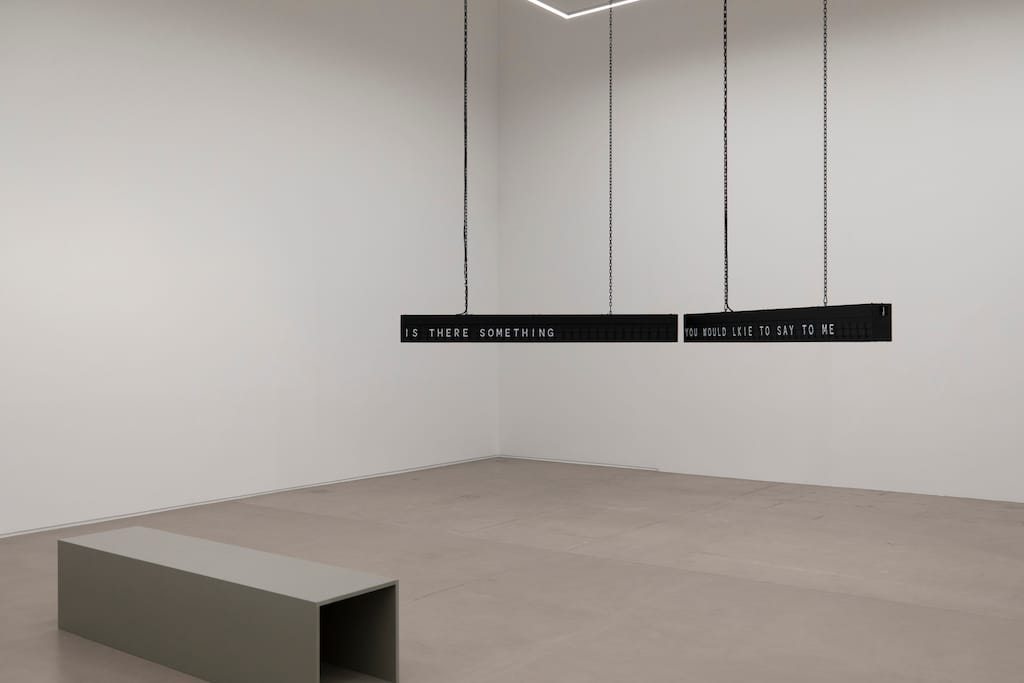
NS: How does Ishara Art Foundation balance its role in presenting regional narratives with engaging wider international audiences, particularly from its base in Dubai?
SP: I’ve been giving tours for Art Dubai visitors—collectors and museum groups—for 15 years now. Though our exhibitions are modest in scale, the curiosity they spark is significant. Many visitors stop by en route to or from Saudi Arabia, and they leave with a deeper understanding of South Asian art through Ishara.
Of course, we’re self-funded, which limits resources but gives us great independence. So we focus on meaningful efforts—like the Ishara House in Kochi, which anchors our commitment to art within the region itself.
It’s not about size—it’s about impact. Education and exposure must begin at home, and even small initiatives can make a lasting difference.

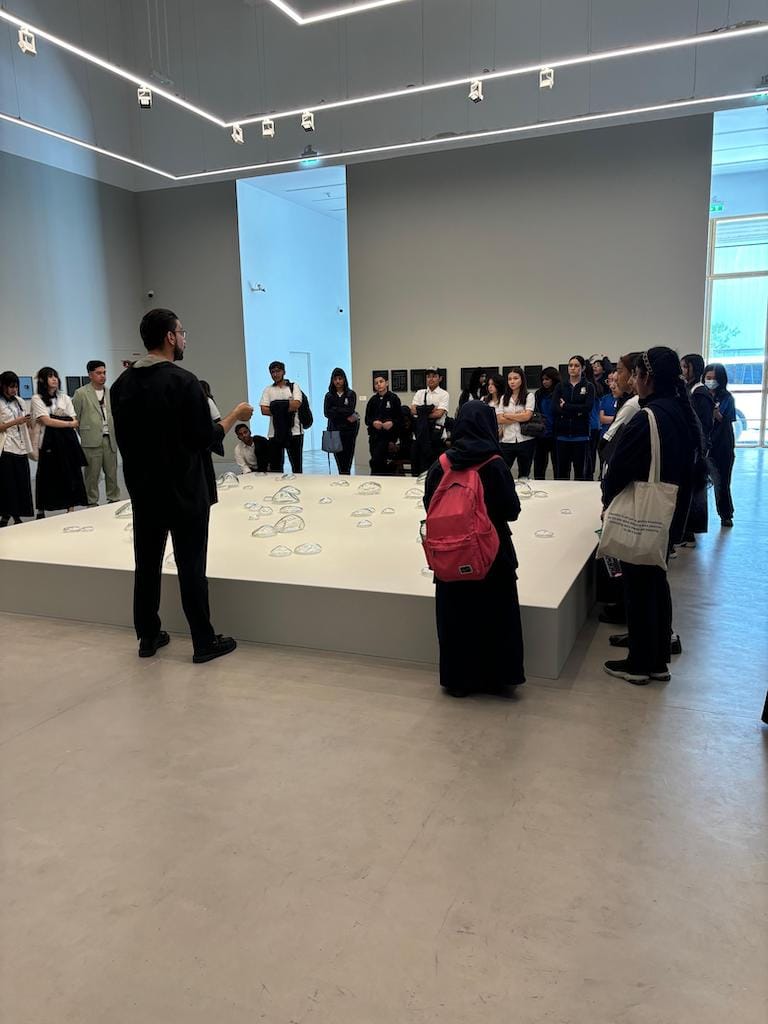
Students from the American University in Dubai and Grammar School visit Ishara Art Foundation.
NS: Could you speak to the role of education and public engagement in Ishara’s work? How important is accessibility in shaping the Foundation’s future?
SP: Education is central to Ishara’s work. Priyanka Mehra, Exhibitions Manager and Programmes Curator at the Foundation, leads this effort and regularly engages with schools following Indian, British, and American curricula. We also collaborate with NYU and the American University in Dubai. Students often get to meet the artists—which leaves a strong impression.
One visit from DPS Jebel Ali stood out: students went home inspired, and parents wrote to say how deeply the experience moved their children.
In South Asia, museum-going isn’t deeply ingrained. I studied at LSR, a culturally rich environment, but never really visited the NGMA. Now, I always stop at the Amrita Sher-Gil room. I often think: I wish I had the means to collect these works then. But seeing them housed in our national museum is heartening.
What truly gives me hope? Seeing school buses parked outside museums. Yes, the children may be noisy or curious in ways that need guidance—but that’s how a culture of art appreciation begins.
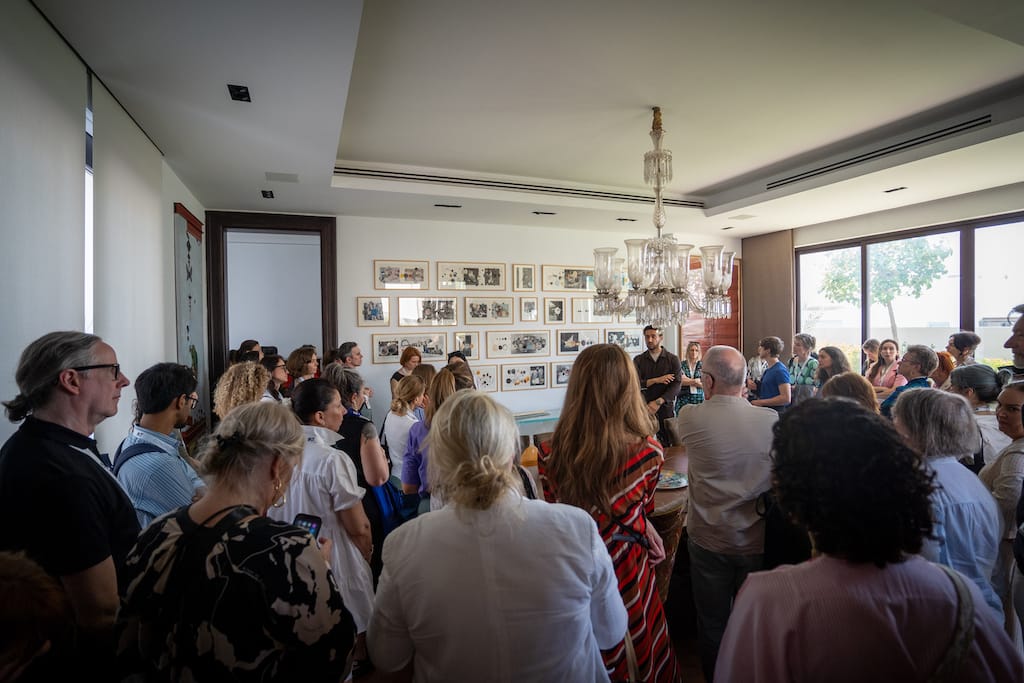
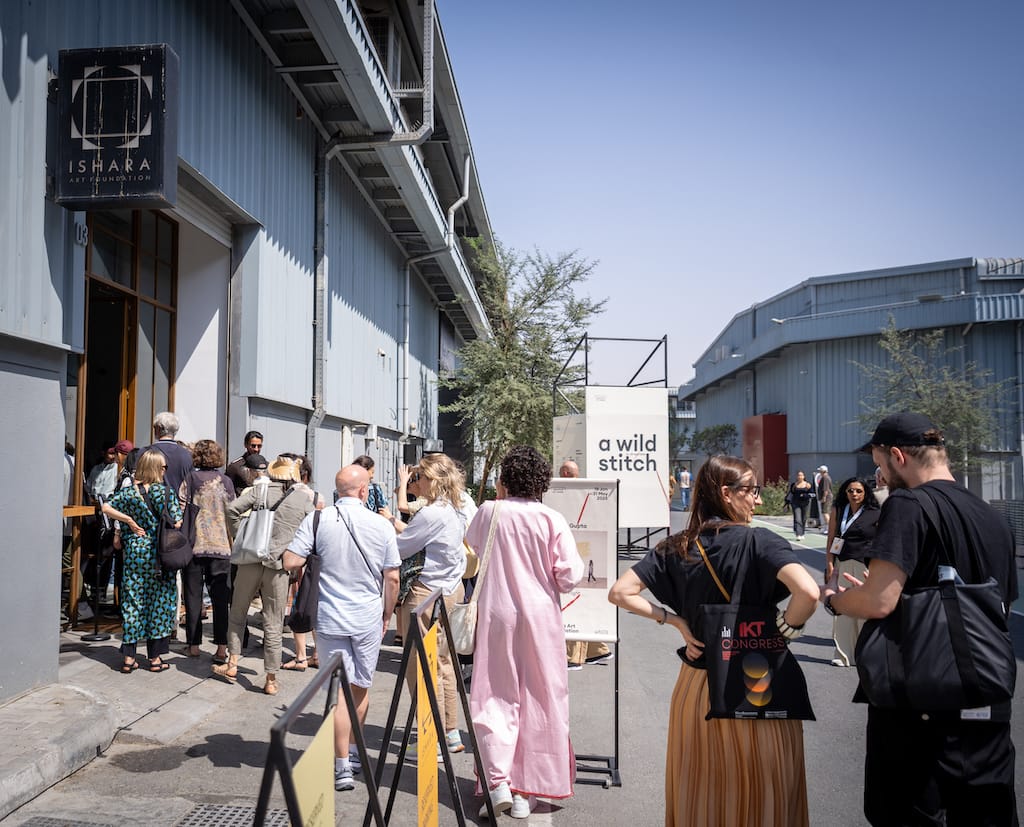
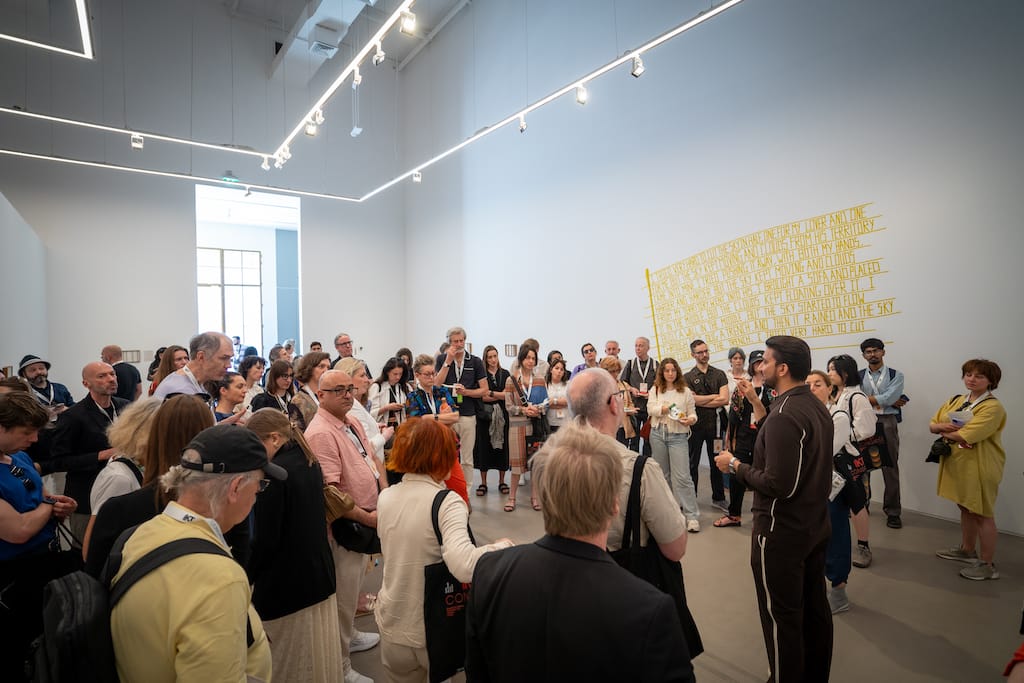
As part of the IKT (International Association of Curators of Contemporary Art) Congress 2025, delegates visited the Ishara Art Foundation and the private residence of its founder, Smita Prabhakar, to view the Prabhakar Collection—an esteemed selection of contemporary South Asian art. Image courtesy of IKT – International Association of Curators of Contemporary Art.
NS: What advice would you offer to emerging collectors and patrons who want to support contemporary South Asian art in a meaningful way?
SP: There are two key ways to contribute: collect art and support institutions.
As a collector, start by visiting exhibitions and museums. Read, engage, and explore what resonates with you—don’t worry about an artist’s nationality. And please, don’t view art as a financial investment. Start small—buy a piece for ₹500 if that’s what you can afford. What matters is the connection you feel.
Like fashion, your taste in art evolves. At first, you may experiment. But over time—maybe 15 or 20 years—you’ll find your style. Allow that growth.
Also, art isn’t limited to canvases. A textile, a carpet, a crafted object—these are valid and valuable too. Support local artisans and smaller institutions. If your child’s school is encouraging art, help them. If a weaver or folk musician is doing something meaningful, support them. It all feeds into the larger ecosystem.
Support doesn’t have to be grand. Start at home, then expand outward. That’s how we build a strong, sustainable future for South Asian art.



